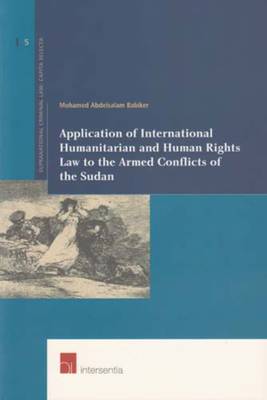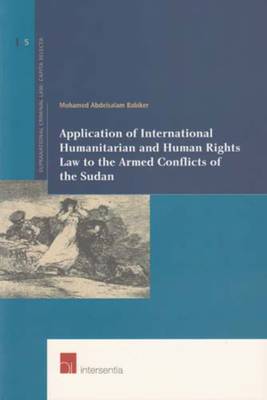
- Retrait gratuit dans votre magasin Club
- 7.000.000 titres dans notre catalogue
- Payer en toute sécurité
- Toujours un magasin près de chez vous
- Retrait gratuit dans votre magasin Club
- 7.000.0000 titres dans notre catalogue
- Payer en toute sécurité
- Toujours un magasin près de chez vous
Application of International Humanitarian and Human Rights Law to the Armed Conflicts of the Sudan
Complementary or mutually exclusive regimes?
Mohamed Abdelsalam BabikerDescription
The death toll resulting from all the armed conflicts in the Sudan, including south Sudan and Darfur, has far exceeded that of the victims of many recent conflicts combined together; more than those of Rwanda, Former Yugoslavia, Sierra Leone and East Timor. Despite the tragic death toll, massive displacement, alleged genocide, crimes against humanity and war crimes, the Sudanese case has neither featured in the legal literature nor been mentioned in the practice of international Tribunals. This book aims to rectify this by focusing on the ‘Sudan’s armed conflicts’ as a case study.
Unlike the approach followed in the preponderant legal literature, which tends to focus on International Humanitarian Law as the only applicable regime in armed conflicts, this book brings on board Human Rights Law, which can be applied side by side with International Humanitarian Law. In this sense, it tries to build bridges between the two branches of international law. It focuses on the operation of both regimes at three levels: their scope of application, the protection they afford, and how they can be enforced or implemented. It critically highlights the Sudan’s laws and how they cohere with or contradict International Humanitarian Law and Human Rights Law. It particularly examines the Sudan’s military, criminal and Islamic laws and judicial practices and analyzes them in the light of International treaties ratified by the Sudan. It draws heavily on the practice of regional and UN human rights bodies and humanitarian organizations such as the ICRC.
The legal materials included in the book constitute a good resource for future work in the field. Most of the materials were written in Arabic, and hence are unavailable in other jurisdictions. Thus, including them as translated materials will prove to be of great value for those who intend to familiarize themselves with the Sudan’s laws and practices in this field.
Spécifications
Parties prenantes
- Auteur(s) :
- Editeur:
Contenu
- Nombre de pages :
- 304
- Langue:
- Anglais
- Collection :
Caractéristiques
- EAN:
- 9789050956819
- Date de parution :
- 14-05-07
- Format:
- Livre broché
- Poids :
- 565 g

Les avis
Nous publions uniquement les avis qui respectent les conditions requises. Consultez nos conditions pour les avis.






